The Wool Journey Part 15: the final wool yarn package and packaging

The yarn is ready to package up at The Natural Fibre Company’s spinning mill, as Sue Blacker shares the final leg of The Wool Journey.
One important thing about this whole Wool Journey is that basically we have described getting from the sheep to the yarn, with various options along the way. However, a yarn is still actually only an incredibly versatile raw material, ready to be made into something!
The options for wool yarn are huge: from lace ring shawls to heavy, hard-wearing carpets or fire-fighter clothing, from natural coloured to amazing dyed shades. So here we are only just preparing a pack of yarn for the amazing further journeys. Even so, each kilogram of spun single yarn may go through up to seven further processes to get it ready to leave our mill.

Cones
We already mentioned cones in Part 14, as the way in which single yarns are almost always packaged. Cones have the advantage of density and carry a large quantity of yarn in a relatively small volume.
However, while they may be made to a specific weight, they are relatively heavy so less ideal for hand crafts. Also of course they tend to be of a single colour. A cone is a great option for Guernsey yarns, as for example sold by our fellow Cornish company Frangipani, as a Guernsey uses a great deal of yarn and having the cone means few or no joins and ends to sew in. But cones don’t fit so easily into pockets or hand-bags!
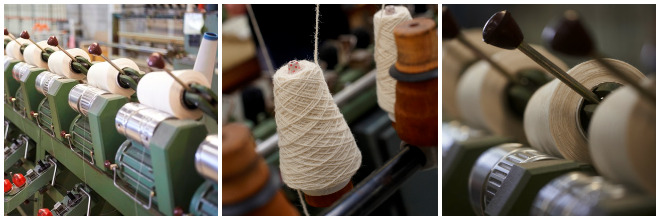
Skeins, hanks and balls
So the other options are skeins/hanks and balls. The word skein is used in the UK as an alternative to the word hank, and is a nicer sounding word in my view. However, in the USA, a skein can also mean a ball of yarn. So occasionally confusion can arise!

Taking a plied yarn from the plying tube, it may be either reeled into a skein or wound onto a cone. Due to the design of ball-winders, it is not easy to wind balls directly from plied tubes, but anyway we would not want to do this as there is usually a vital intermediate stage!
Some of our customers are happy to wash out the spinning oil themselves which obviously saves them money too. They may take large un-weighed hanks and wash them or even take cones and reel off measured hanks. Either of these two unwashed finishes are included in our spinning prices. If they soak well and wash well, they can also happily dye hanks which still contain the spinning oil.
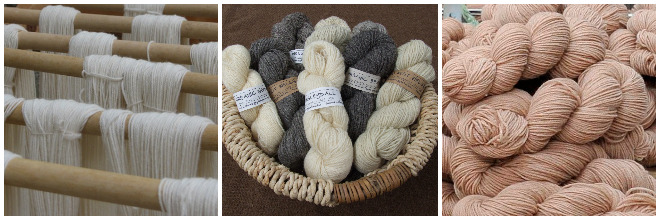
However, an increasing proportion of our customers want their yarn in skeins or balls, with paper bands or even tied-on tags.
Normally, therefore, we need to wash out the spinning oil. If we are dyeing a yarn, the dye process will also remove the spinning oil, which is emulsifiable and easily removed with just warm water, with a small amount of added soap if needed. The washing does rather more than just removing the oil however, as this process also bulks up the yarn and brightens the colour which will have been camouflaged slightly by the oil.
At The Natural Fibre Company, we are now the proud possessors of a special washing machine originally designed for bridal and evening wear and therefore also perfect for all but the most delicate yarns. This has helped us to cope with the growing demand, though we still need to wash mohair, alpaca and very fine yarns by hand, then helped by our trusty wringer by the sink, which was the cheapest and best ever productivity aid we have bought.

After washing or dyeing, we can spin-dry the yarn to remove most of the moisture and then it is hung on racks to air dry. Larger hanks of finer yarns and alpaca take longer, maybe even three days, while smaller hanks and medium yarns take maybe a day. We have a drying room and also open racks and we go and turn the skeins/hanks regularly to enable the air to dry the whole of them.
If we are making measured 100g or 200g skeins/hanks, then we reel these directly from the plying tubes, wash, dry and they are ready either to send back loose or to hand twist and possibly label. Each skein is individually weighed as the tolerances on trading standards are pretty strict and have to be met.
It is easier to make measured skeins from worsted spun yarn as it is inherently more even than a woollen spun yarn, where the weight can vary quite a lot – we work on finished weight as required, and therefore the length of yarn in each skein or ball will differ and this is why we stress the small “c.” on our labelling, because as a natural product the yarn does naturally vary.
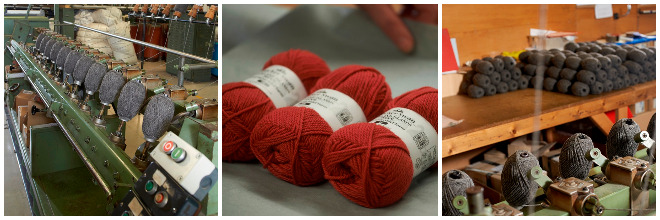
If we are making 50g or 100g balls, we reel into large hanks, wash and dry and then wind onto cones so that the yarn will flow evenly onto our ball-winding machine. The ball-winder, like the skein reeler, works on measured length, so again we need to weigh each ball for accuracy. We then label, if required, and pack into bags.
As with skeins, so balls will also be more even and quicker to make from worsted than from woollen spun yarn, but the overall finishing process is not dramatically different dye to the time taken in both spinning and plying. Overall worsted yarns take longer to make due to the additional time needed in worsted yarn preparation (combing and gilling, see Parts 10 and 11).
The cones are packed into re-usable double polypropylene sacks as the handling by carriers or even on pallets seems to require it! We are endeavouring to save on plastics by using a clean inner sack and a re-used outer sack.

The skeins and balls are packed into re-usable grip-seal transparent plastic bags, to keep them in best condition. We have looked at other options but paper tears and woven fabrics permit moths to invade, so the grip-seal at least makes the bags re-usable. Bio-degradeable bags are an option but are expensive and obviously may then also cause our customers to have to find another bag! The bags are then packed into second hand cardboard boxes made of course, as almost all cardboard is, of recycled paper fibre.

Dyeing
We have a dye plant and we do a certain amount of dyeing both for some larger customers and also for Blacker Yarns. Unless dyeing in very small quantities at home, dyeing, like spinning, tends to be a volume business and this is why we no longer dye small batches, because we are not a hand-made business even though our yarns are all hand finished, and our dye vats have a certain capacity.

Dyeing is a whole new magic business and people love colour, which is why they have over millennia selected white sheep! And it is why, but for the efforts of enthusiasts, naturally coloured sheep are very much less numerous.
We have produced an advice note on dyeing, which importantly describes the effects of a dye on different yarn bases – even white wool is not a particular white but may vary from bone white to buttery cream and this will affect the colour when dyed.
While we do have a postscript about labelling to add, we have now reached the end of this particular journey… but the beginning of the next journeys of a wool yarn or scoured wool fibre. We hope this encourages people to experiment more and also to use more wool!
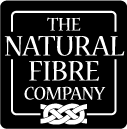 About the author
About the author
As British wool spinners, The Natural Fibre Company add value by processing quantities of fleece from 20 kilograms up to over a tonne and more. As we scour, card, dye and woollen and worsted spin under one roof, we are effectively experts in all aspects of the process of turning raw fleece into high quality yarn. Most of our customers are in the UK for rare and specialist breeds.
The views expressed in our blog are those of the author and not necessarily lowimpact.org's




 The Wool Journey Part 11: which yarn to make?
The Wool Journey Part 11: which yarn to make?
 The Wool Journey Part 12: spinning at last!
The Wool Journey Part 12: spinning at last!
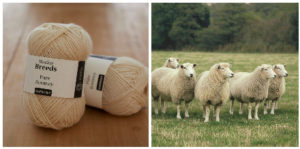 The Wool Journey Part 13 & 14: single versus plied yarn and the bulking of wool
The Wool Journey Part 13 & 14: single versus plied yarn and the bulking of wool
 The Wool Journey Part 16 and postscript: labelling yarn
The Wool Journey Part 16 and postscript: labelling yarn
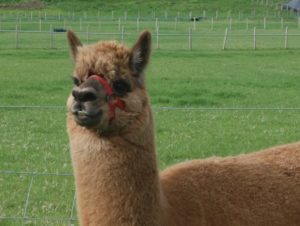 Alpacas
Alpacas
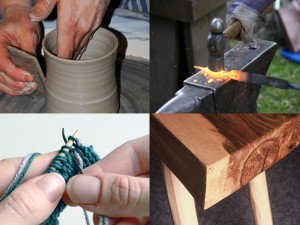 Craft production
Craft production
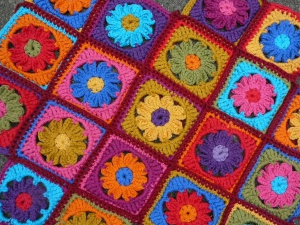 Knitting & crochet
Knitting & crochet
 Low-impact clothes
Low-impact clothes
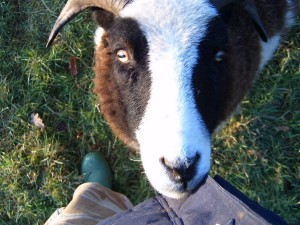 Sheep
Sheep
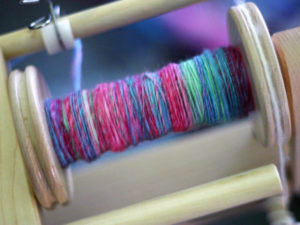 Spinning
Spinning


